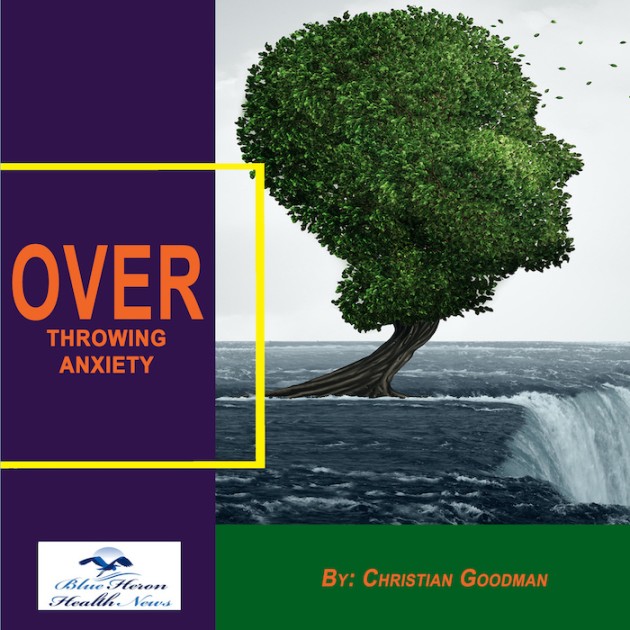
Overthrowing Anxiety™ This eBook includes a complete program to treat anxiety effectively. It guides you to learn the ways to find, understand, and accept the main cause of your anxiety and start using the techniques provided in it to treat the problem.
What are the benefits of deep breathing exercises for anxiety?
Deep breathing exercises can be highly effective in managing anxiety by activating the body’s relaxation response and calming the nervous system. They are simple, easy-to-learn techniques that can be practiced anywhere, and they offer both immediate relief and long-term benefits for those dealing with anxiety. Here are some of the key benefits of deep breathing exercises for anxiety:
1. Activates the Relaxation Response
Deep breathing helps stimulate the parasympathetic nervous system, which is responsible for the body’s “rest and digest” functions. When you practice slow, deep breathing, your body shifts out of the “fight or flight” mode (controlled by the sympathetic nervous system), reducing the physical symptoms of anxiety, such as:
- Elevated heart rate
- Shallow breathing
- Muscle tension
By activating the parasympathetic nervous system, deep breathing encourages relaxation and reduces stress.
2. Reduces Physical Symptoms of Anxiety
Anxiety often manifests physically through symptoms such as rapid heartbeat, shallow breathing, dizziness, or tight muscles. Deep breathing helps to:
- Slow the heart rate: By breathing deeply and slowly, the body’s heart rate slows down, which counteracts the rapid pulse commonly associated with anxiety.
- Promote deeper breaths: Shallow, rapid breathing can exacerbate feelings of anxiety, but deep breathing encourages a full, diaphragmatic breath, which increases oxygen intake and helps the body relax.
- Release muscle tension: As you focus on your breath, it can help relax tense muscles, which are often a result of anxiety or stress.
3. Increases Oxygen Supply to the Brain
Deep breathing increases the flow of oxygen to the brain, which can have a calming effect and improve mental clarity. This oxygenation helps:
- Clear the mind: A calm, clear mind is less likely to be overwhelmed by anxious thoughts.
- Enhance focus: By increasing oxygen levels, deep breathing helps you stay focused and present, reducing the mental fog or scattered thinking that often accompanies anxiety.
4. Promotes Mindfulness and Present-Moment Awareness
Deep breathing exercises encourage mindfulness, which is the practice of paying full attention to the present moment without judgment. This can help break the cycle of anxious thoughts that often involve worrying about the future or dwelling on the past.
- Redirects attention: When you focus on your breath, you take your attention away from anxious thoughts and bring it to something neutral, like your inhalation and exhalation. This shift in focus can help you gain perspective and reduce feelings of anxiety.
- Reduces overthinking: Deep breathing helps anchor your awareness in the present, making it easier to quiet the mental chatter that fuels anxiety.
5. Enhances Emotional Regulation
By practicing deep breathing regularly, you can build emotional resilience. It helps regulate the nervous system and provides a tool to manage intense emotions when they arise. Deep breathing allows you to:
- Pause before reacting: When you feel anxiety rising, taking a few deep breaths creates a pause, allowing you to choose how you respond rather than reacting impulsively or being overwhelmed by emotions.
- Create emotional balance: The calming effects of deep breathing help you feel more in control of your emotions, making it easier to respond to anxiety with calmness and clarity.
6. Lowers Stress Hormones
Deep breathing can help reduce the levels of cortisol, the primary stress hormone, in the body. High cortisol levels are often associated with anxiety, and when deep breathing reduces cortisol, it can lead to:
- Lower stress: Reduced cortisol levels help the body feel less stressed and anxious.
- Enhanced mood: As cortisol levels decrease, mood can improve, making it easier to manage anxiety and stress over time.
7. Improves Sleep Quality
People who experience anxiety often struggle with sleep disturbances, such as insomnia or restless nights. Deep breathing exercises can promote relaxation and help you sleep better by:
- Calming the body: By slowing the heart rate and relaxing muscles, deep breathing signals to the body that it is time to rest.
- Reducing pre-sleep anxiety: Engaging in deep breathing before bedtime can alleviate anxious thoughts, making it easier to fall asleep and stay asleep.
8. Helps Manage Panic Attacks
Deep breathing is one of the most effective techniques to manage panic attacks, which can be triggered by intense anxiety. During a panic attack, deep breathing helps by:
- Slowing down hyperventilation: Panic attacks often cause rapid, shallow breathing, which can worsen feelings of dizziness or lightheadedness. Deep breathing helps regulate the breath and restore normal breathing patterns.
- Calming the body: As the breath slows and becomes more regular, the body’s physical symptoms of panic, such as a racing heart, decrease. This can help stop the cycle of panic and reduce the intensity of the attack.
9. Increases Self-Awareness
Regular practice of deep breathing enhances self-awareness by helping you tune into your body’s responses and emotions. When you pause to focus on your breath, you gain better insight into how your body feels and how anxiety manifests in physical sensations. This awareness can help you identify triggers and manage your reactions more effectively.
10. Provides a Portable and Accessible Tool
One of the great advantages of deep breathing exercises is that they are:
- Easy to practice anywhere: You can practice deep breathing in any situation, whether you’re at home, at work, or even in social settings. It’s a discreet and portable tool for managing anxiety on the go.
- Accessible for everyone: Deep breathing doesn’t require any special equipment or training, and it’s suitable for people of all ages and physical abilities.
Common Deep Breathing Techniques for Anxiety
There are several effective deep breathing techniques that can help reduce anxiety. Here are a few to try:
- Diaphragmatic Breathing (Belly Breathing): Inhale deeply through your nose, allowing your abdomen to expand. Exhale slowly through your mouth, allowing your belly to contract. This technique encourages full, deep breaths, which can activate the relaxation response.
- 4-7-8 Breathing: Inhale through your nose for 4 counts, hold your breath for 7 counts, and exhale through your mouth for 8 counts. This pattern helps slow the breath and induce calmness.
- Box Breathing: Inhale through your nose for 4 counts, hold your breath for 4 counts, exhale through your mouth for 4 counts, and hold again for 4 counts. Repeat this cycle several times. This technique promotes focus and relaxation.
- Alternate Nostril Breathing (Nadi Shodhana): Close one nostril and inhale deeply through the other. Close both nostrils, hold the breath briefly, then exhale through the opposite nostril. Repeat by switching nostrils. This technique is known to balance the body and mind.
Conclusion
Deep breathing exercises are a simple yet powerful way to reduce anxiety by activating the body’s relaxation response, regulating emotions, and improving mental clarity. They provide immediate relief from the physical symptoms of anxiety and offer long-term benefits, such as enhanced emotional resilience and better stress management. Whether used in moments of acute anxiety or as a daily practice, deep breathing is an effective tool for promoting calm, relaxation, and overall well-being.
Overthrowing Anxiety™ This eBook includes a complete program to treat anxiety effectively. It guides you to learn the ways to find, understand, and accept the main cause of your anxiety and start using the techniques provided in it to treat the problem.
